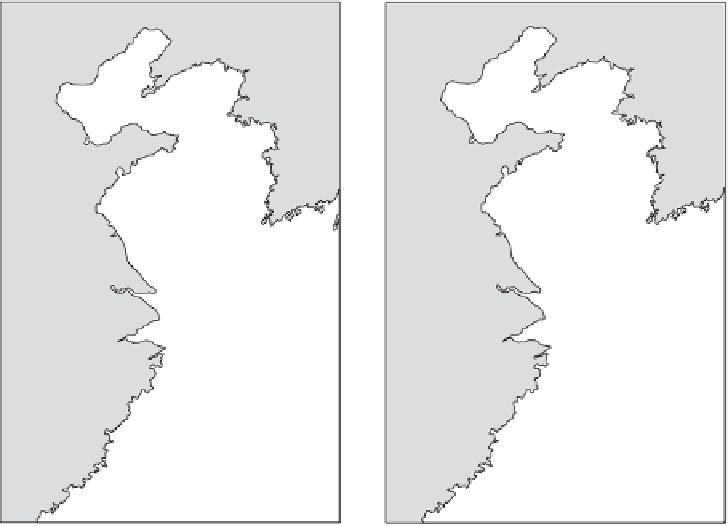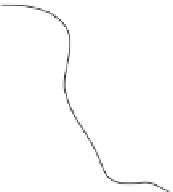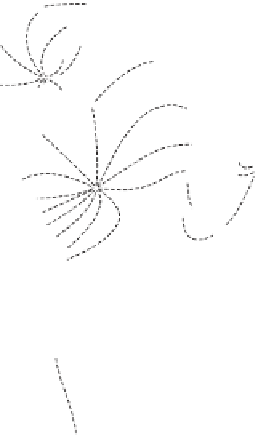Geoscience Reference
In-Depth Information
(a)
(b)
150°
120°
60°
120°
120°
300°
90
60°
300°
60°
300°
120°
150°
150°
0°
240°
60
330°
180°
330°
38°N
38°N
180°
180°
240°
330°
300°
330°
330°
150°
150°
120°
180°
210°
300°
120°
90°
270°
240°
150°
60°
30°
240°
330°
30°
0°
270°
300°
60°
30°
90°
120°
150°
180°
210°
240°
210°
30°
60°
32°N
32°N
60°
240°
90°
330°
240°
330°
26°N
26°N
270°
270°
30°
118°E
124°E
118°E
124°E
Figure 3.15
Co-tidal charts for the Yellow Sea showing co-phase lines (continuous) in degrees
and co-range lines (dashed) in cm for (a) the M
2
semi-diurnal constituent and (b) for the K
1
diurnal constituent. Notice that the spacing of the amphidromes in (b) is approximately twice
that in (a) because the period and wavelength of the diurnal waves are greater by a factor of
2.
From (Choi,
1980
) with permission of the Korean Ocean Research and Development Institute.
∼
water farther along the coast opposite the next. Note also that there is a marked
asymmetry across the gulf with generally larger tides on the Korean coast because of
amphidromes being displaced to the left when looking into the gulf (again in accord
with the Kelvin wave model).
The pattern of the K
1
diurnal constituent is shown in
Fig. 3.15b
. The period and
hence the wavelength of the tide is approximately twice that of semi-diurnal constitu-
ents and with it the spacing of the amphidromes. Consequently, the diurnal constituent
exhibits only two amphidromes within the gulf. Again the response on the Korean
coast is larger as the amphidromes are displaced over to the Chinese side of the gulf.
Box 3.3
Tidal current ellipses
Tidal currents generally involve two components of velocity u and v which combine
together to move water particles around near-elliptical paths. For an individual
constituent (say M
2
with angular frequency o
M2
), the components take the form of
cosine functions of time t with different amplitudes (u
M2
and v
M2
) and phases (d
u
and d
v
):
















































































































































































Search WWH ::

Custom Search